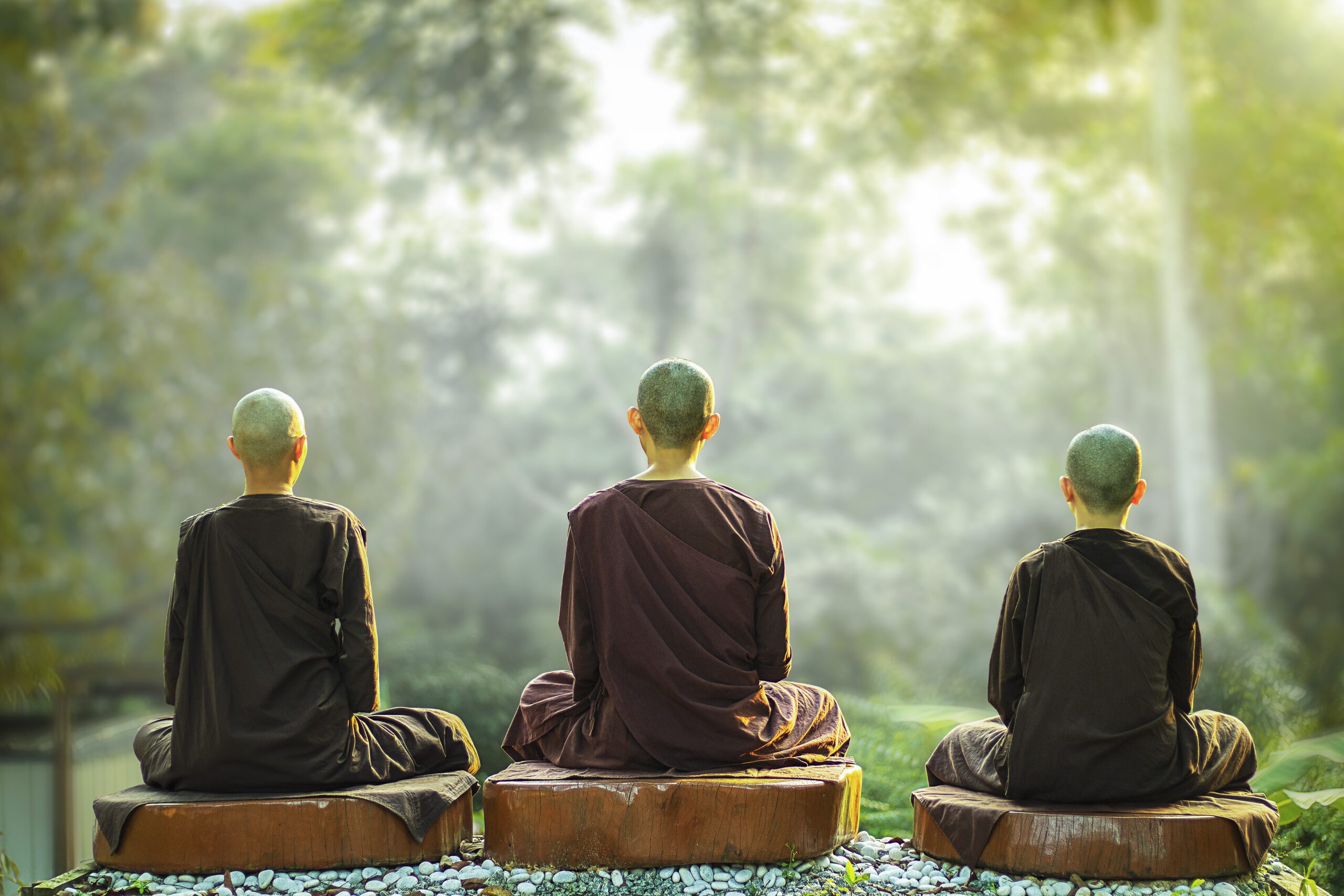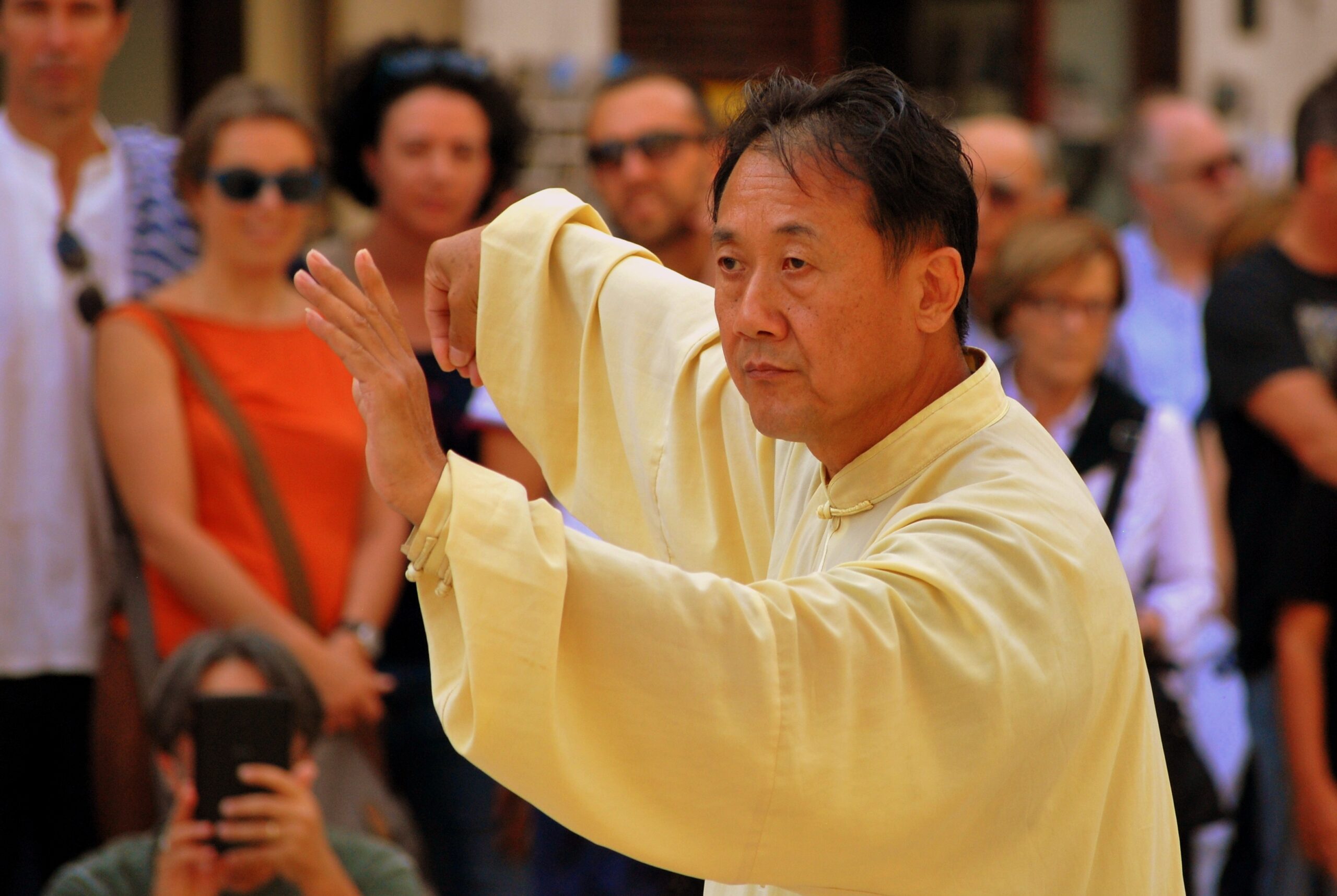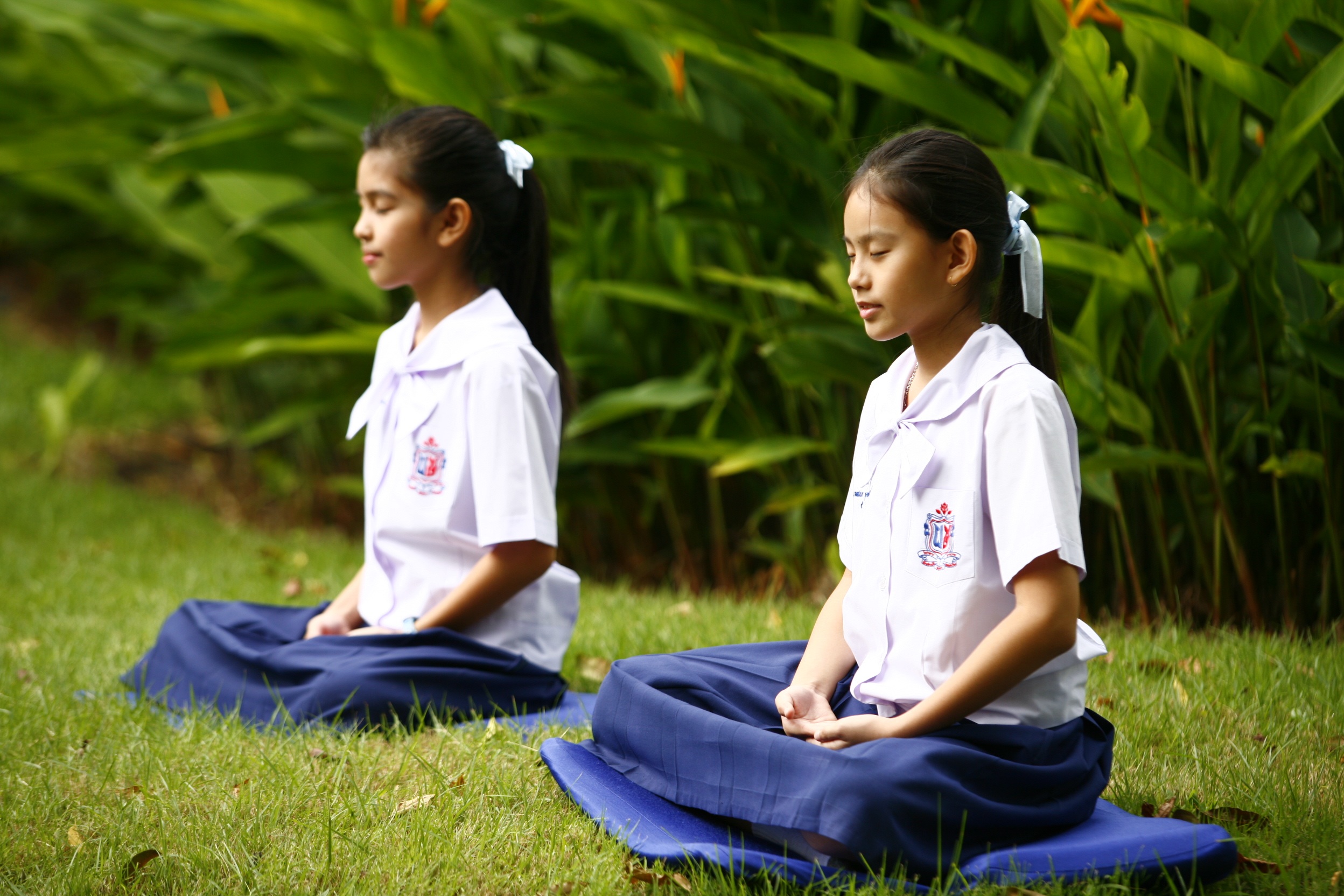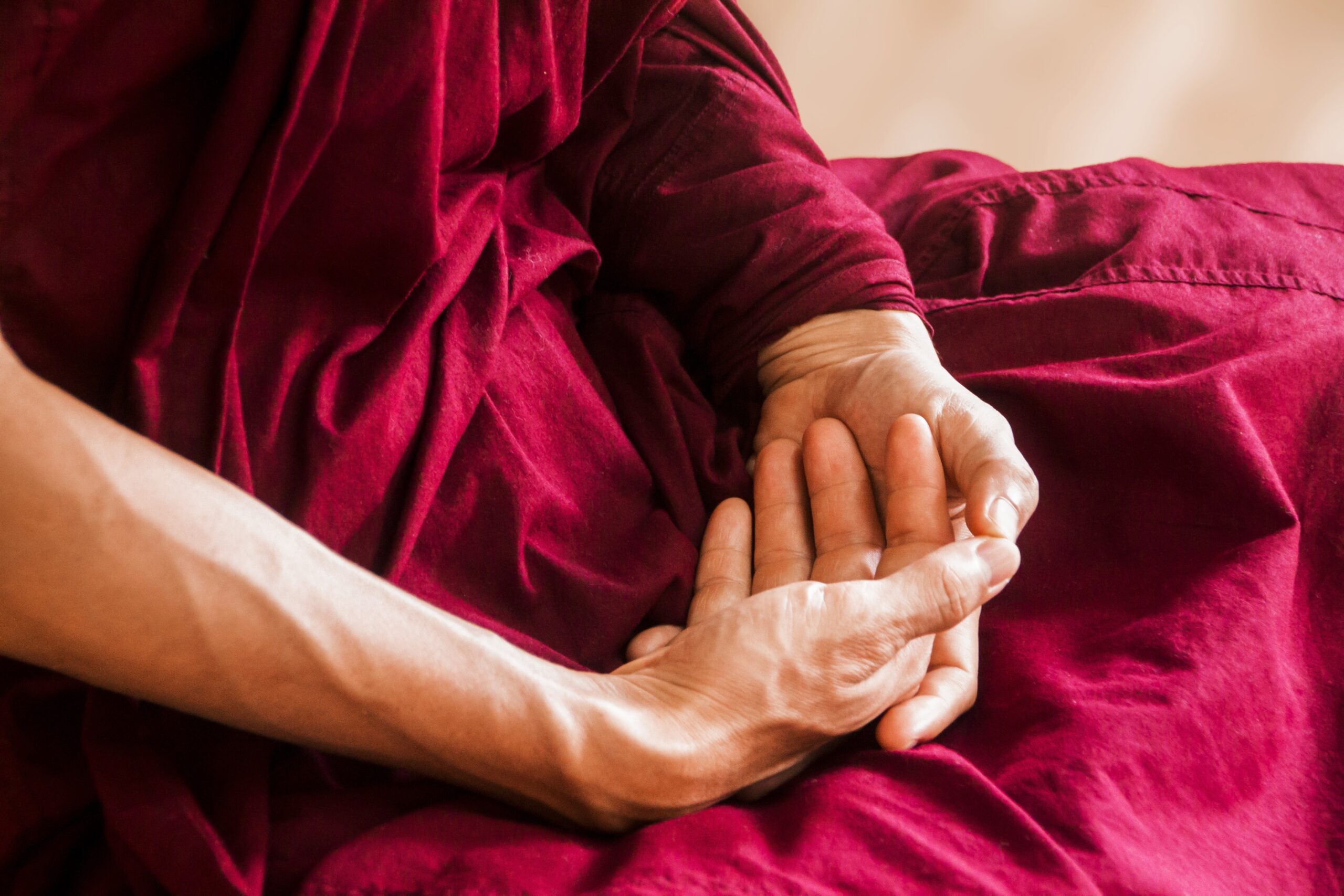Posture, Rooting & Stances Vital to Chi
Posture, stances and rooting are all essential for balanced chi circulation. Without them, the chi flow becomes inhibited.
How many times have I seen practitioners of tai chi calisthenics — not just the students, but also the instructors themselves — assume even slight misalignments and incorrect stances that indicate they are not rooted and therefore, their chi is inhibited from circulating freely!
When one reaches the highest level of mental discipline, where only yi mind power is used to guide and channel the chi, these things no longer matter, but beginning and intermediate students must first establish a solid foundation in postural alignment and correct stances.
Precision is key: until the the yi consciousness is sufficiently developed to control and guide the chi, the vital energy must be given free access throughout the body, within and without.
Maintaining the Correct Posture
A correct posture in tai chi qigong means the chest must be relaxed and caved in, the vertebrae hanging loosely down, the tailbone tucked inward, the kua indented (i.e. part of the groin that forms the crease connecting hip and legs), and all joints hanging loosely and relaxed.
Chi is responsible for attack and repulse chi in martial arts, tonifying and detoxifying chi in healing, rooting chi in both, and spiritual chi to transcend the physical plane of consciousness. But how to cultivate the myriad kinds of chi?
To promote circulation of the chi and further its refinement, a properly aligned posture and rooting are key components of traditional training. Joints are areas that we call “gates” and when locked, inhibits the flow of chi. That is why when we practice tai chi qigong, our stances are low and knees and elbows are always bent loosely to keep the gates open.
When my master was very young and still in training, one of his masters used to insist that he assume such a low stance with a straight posture, that his knees were bent at almost a 90 degree angle, his vertebrae hanging loosely.
An incense stick was lighted, and until the incense burned down, he was to maintain this low stance to increase his rooting and chi circulation. Usually, this meant maintaining a low stance anywhere from half an hour to 90 minutes per sitting!
Low stances allow for better rooting.
Rooting or Grounding the Chi
What do I mean by the term “rooting”? Rooting refers to grounding the chi. We tap heavenly chi from the top of our skull and draw earthly energy from the ground beneath our feet.
The following clip illustrates the concept of rooting:
Even if you didn’t understand the language, the rooting ability of this master is obvious.
Traditional training is NOT mere calisthenics. Mere calisthenics cannot produce the ability that this master has in maintaining his rooting on one foot, as well as the ability to push other students down, regardless of their size and strength!
Certainly, if you tried to imitate his stance and posture, you would still be unable to do what he does, simply because his ability does not rely on physical posture and calisthenics alone. It relies on mastery of rooting his energy to the ground.
And it is not just martial arts that require good rooting ability, but also in healing and spiritual development. In healing, we require rooting to draw healing energy from the ground, to detoxify and to remove pain. In order to balance both heavenly and earthly energies, we must be able to tap from both the atmosphere and the earth.
Psychic power also requires rooting abilities, as does proper circulation of chi for spiritual advancement.
Rooting of the caliber demonstrated by the master in the video clip takes many years of intensive training. Most instructors of traditional tai chi qigong will start their beginning students on rooting exercises (see Qigong Standing Meditation Postures and Qigong Rooting ecourses) even before they have learned other foundational exercises.
you don’t have a leg to stand on!
The students tend to almost always uproot before they root down again. When that happens, the flow of chi is disrupted.
Before shifting weight or changing positions, be sure to root down first. Use your yi to send the chi down through the prominent leg and into the ground three feet or more. Before moving from a two legged to one legged stance, first uproot the one leg and transfer the rooting to the other leg, or your balance will be affected.
If you have not sufficiently developed the yi mind to root your chi, then you should not be changing positions, such as in regular practice of tai chi chuan. Instead concentrate on practicing rooting exercises to build a solid foundation, otherwise, you build poor postural habits in your tai chi practice that become difficult to change later on.
If the yi consciousness is not sufficient to root the chi, is it still possible to learn dynamic positions such as the Taiji Bufa or Tai Chi Walk? Yes, the Walk teaches correct postural alignment during movement. You can learn both the Walk and rooting at the same time, but rooting exercises should be mastered before you attempt to manipulate the chi any further than that.
No tai chi form can ever be truly mastered without taking consideration proper postural alignment, proper rooting of the chi and correct stances.
Assuming the Correct Stance
Two basic stances with which beginning tai chi qigong students should become very familiar are the Qigong Horse Stance and the Qigong Bow Stance. These are not to be confused with horse and bow stances of other martial arts.
Besides postural alignment, correct stances also promote good rooting. If a stance is too wide, changing stances becomes awkward and unbalanced. If the stance is too narrow, again, the postural alignment and balance are affected and rooting becomes difficult.
If the toes are pointed outward instead of straight or inward in a horse stance, postural balance is again affected and the chi becomes scattered.
A good foundation allows you to become firmly rooted in your chi and aware of how the chi is affected by the positioning of your stance. If you are not sensitive to slight changes, then you have not gained sufficient awareness of your chi.
In that case, you should continue to build your foundation, practicing rooting meditation and “ting jing” or chi sensitivity and yi development exercises.
Postures, stances and rooting are a key component for balancing the chi and establishing a solid foundation from which your chi can develop healthy and strong. This is not mere calisthenics. This is creating the proper environment for your vital chi to circulate.




